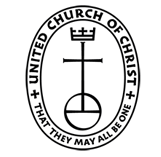Learning to Love the Light – sermon on March 15, 2015
Scripture Lesson: John 3: 14-21 Jesus said, “And as Moses lifted up the bronze snake on a pole in the wilderness, so the Son of Man must be lifted up, so that everyone who believes in him will have eternal life.
For this is how God loved the world: He gave his one and only Son, so that everyone who believes in him will not perish but have eternal life. God sent his Son into the world not to judge the world, but to save the world through him.
There is no judgment against anyone who believes in him. But anyone who does not believe in him has already been judged for not believing in God’s one and only Son. And the judgment is based on this fact: God’s light came into the world, but people loved the darkness more than the light, for their actions were evil. All who do evil hate the light and refuse to go near it for fear their sins will be exposed. But those who do what is right come to the light so others can see that they are doing what God wants.”
Learning to Love the Light – sermon on March 15, 2015 by Rev. Doreen Oughton
So has anyone noticed at many large gatherings, like football games, someone has a sign, or face paint or something that says John 3:16? Are people familiar with that verse of scripture? It is part of this morning’s reading. Feel free to check your pew bible. If you are familiar with that line, are you also familiar with the verses before and after it? Usually we hear it out of context, and while it is a beautiful line in and of itself, I wonder what we might discover as we look at it in context, and explore this whole periscope. So let me fill you in on the situation that leads to this teaching from Jesus. It is early in his ministry according to the gospel of John. He has been identified by John the Baptist as the Son of God, has called a few disciples, changed water into wine at the wedding in Cana, gone to the Passover at the Temple in Jerusalem and drove out the money changers and the animals. The Gospel tells us that after that, many believed in his name because of the signs he did, but Jesus did not trust himself to them.
Now a Pharisee named Nicodemus comes to Jesus in the night and says he knows, because of the signs, that God is with Jesus. Then Jesus tells him that no one can see the kingdom of God unless he or she is born anew of water and the Spirit. As Nicodemus questions how this can be, Jesus says he / we have been teaching how it can be so, but “you do not believe it.” He goes on to say that if people won’t believe what he testifies to about earthly things, how can he possibly tell them about heavenly things? And that leads right into today’s reading – where Jesus, still in conversation with Nicodemus, refers to an ancient story from the Book of Numbers where God instructs Moses to lift a bronze snake on a pole for people to look at to be saved from snake bite. He likens himself to this bronze snake – lifted up for people to look at and be saved. Only Jesus talks about not just looking, but believing, not to be saved from bodily harm, but saved for eternal life. Next comes the famous line about how God loved the world – the God-hating world – and gave the Son so that all who believe shall not perish.
But the passage doesn’t end there. Jesus goes on to say that the purpose of the Son coming is not to judge the world, but to save it. He talks about judgment and light and darkness, all of it centered on the necessity of belief. Jesus says those who believe in him are saved, and those who do not believe in him have already been judged. But what is it he wants us to believe – that he existed or exists; that he was the Son of God or God incarnated – divine; that he died and was resurrected? Remember that this passage comes at the beginning of the Gospel, 2-3 years before his e arrest and crucifixion. So I don’t think he was trying to tell Nicodemus about what was to come. I think he was trying to tell Nicodemus something about God, about himself, and also about Nicodemus and all people. I think he was saying that people had it so wrong about God – that God wasn’t vengeful, wrathful, punishing; but was mercy and love. And I think he was saying that you could see who God was by looking at him, Jesus. And I think he was saying that everybody could be the same way, could be like Jesus, like God – could access eternal life the way Jesus had, but it would take a completely different understanding of things.
Those who “do not believe in him” do not believe that he is truly love and mercy, nor that God is truly love and mercy, and do not believe that they themselves can be love and mercy. They have already been judged – judged by themselves – condemned, as it says in some translations. They will exist knowing only what they have believed all along – that there is not enough; that life is hard and then you die; that fear, insecurity, and self-centeredness are the drivers of our human existence.
The verses about the light really resonated for me: “God’s light came into the world, but people loved the darkness more than the light, for their actions were evil. All who do evil hate the light and refuse to go near it for fear their sins will be exposed. But those who do what is right come to the light so others can see that they are doing what God wants.” People loved the darkness more than the light. What do you think about that?… I thought about what it is like to feel exposed, to be seen, seen deeply, seen into, and how vulnerable we feel. We hide our self-perceived physical imperfections under clothes, make-up, hats. We may not like the darkness when we are feeling lost and frightened, but when we know where we are, what we are and who we are, we may prefer to hide out there, in the darkness.
I watched an episode of Dr. Phil several weeks ago. There was a woman on the show who had lost a lot of weight and wanted to have surgery to get rid of some of the excess skin that remained. She had brought with her a male “friend” with whom she wanted to have more than a friendship. This man had told her that while he felt a strong connection with her, even loved her as she loved him, he could never have her as a girlfriend because of this excess flab. He found it unattractive, and just couldn’t get past it. The woman asked if he would invest in the relationship by lending her the money for the surgery, which she would pay back over time, and which would allow them to see what might develop romantically. He was reluctant to do so because he suspected that once she had the surgery she would be so hot that she could have any guy she wanted and she would no longer want him. Is it any wonder we love the darkness when this world so often tells us that when we are seen fully we will be found wanting, we will not be loved or lovable. Is it any wonder we want to hide, take cover, lie low. It’s the same with the non-physical parts – our thoughts, actions, feelings, beliefs. We fear that if they were exposed we could never be loved. If we said what we truly felt and believed, people would reject us. It has happened to most of us, hasn’t it? We did something that blew up a relationship. We said something thoughtless and lost a friend. We did something reckless and ruined our reputation. And so we hide, we lie, we put up our guard. We chase the darkness.
But God is not like that. God’s love is merciful and steadfast. God does and will love us through anything. I believe that is what Jesus wants us to believe about himself and about God. That we need not fear the light, we can love the light. We can let the light pour over us, exposing every nook and cranny, flushing out all the shadow places, and we will not be found wanting. We will be seen as beautiful, as good, as precious. God can and will not only see and accept us, but transform us, make something wonderful even out of the parts of us that are ugly or weak.
There is another story I read about about a woman with “body issues,” that always stuck with me. It was from the book My Grandfather’s Blessings by Rachel Naomi Remen. she tells of Clare, an elegant twenty-something businesswoman who had recently undergone surgery to remove her right breast. Clare sat in Dr. Remen’s office sobbing at the fact that before her surgery men had found her attractive and she had been very proud of her body. “But that is over now,” she told Dr. Remen. “I could never allow anyone to see me disfigured like this.” After her surgery she ended the relationship with the two men she was seeing. The story goes on to explain that Clare had gone through cancer entirely alone, too embarrassed to open herself up. As she visited Dr. Remen over the next couple of months she told her that she planned on having breast reconstruction surgery in 5 years, when her oncologist said the chances of recurrence are so low she will be home free.
Over the next year, Clare met Peter, a paint artist who she deemed a good friend. Peter and Clare had developed quite a relationship when suddenly Clare scheduled an urgent visit with Dr. Remen. “It’s the end,” Clare said. “Peter has invited me to go away for the weekend and now he will know about my breast. Beauty is his whole life and now he will be completely repulsed.” Dr. Remen did her best to soothe Clare’s worries and urged her to call if she needed anything. Dr. Remen did not hear from Clare for a few weeks, until Clare called and told her Peter still wanted to be friends.
Clare’s breast reconstruction surgery was coming up and Dr. Remen did not see her until a few days before the much anticipated surgery. “I was delighted to celebrate this milestone with Clare and I asked her about it, ” said Dr. Remen in the essay. “Clare smiled at me and told me she cancelled it.” “How come? I asked her.” She slowly unbuttoned her shirt and shrugged it off her shoulders. Her mastectomy scar had been covered with a mass of tiny, exquisite tattooed flowers. They looked real. In the most delicate of pastel shades, they climbed to the top of her right shoulder. As she turned away from me, I could see that they fell across it and down her back as if scattered by gravity or wind. Her body was beautiful…One little tattooed flower had come to rest in the small of her back, under it was a tiny initial ‘P’. She was indescribably beautiful. Women like her were encountered only in dreams. Clare and Peter had gone to Amsterdam to get the tattoo don. Then they used the money she had saved for her surgery for a honeymoon. Clare told Dr. Remen, “My husband convinced me beyond the shadow of a doubt that anything of real beauty is one of a kind.”
This is what our God is like. This is what Jesus showed us. That God can take these mortal bodies, these imperfect hearts and souls, thoughts and feelings, and through love and mercy, fashion them into a new creation, one of a kind, uniquely beautiful. This is what we are asked to believe. We are invited into the light, called to seek the light. We don’t wait until we are “doing what is right” before we come into the light, we do what is right when we trust God’s light in Christ Jesus, when we bring ourselves, broken, flawed – even the evil parts – to the cross of Christ and let ourselves be born anew. We become a new creation. We – ourselves – become the light, sharing divine love, inviting others out of the shadows, out of hiding, out of judgment and into the kindom. May it be so.








